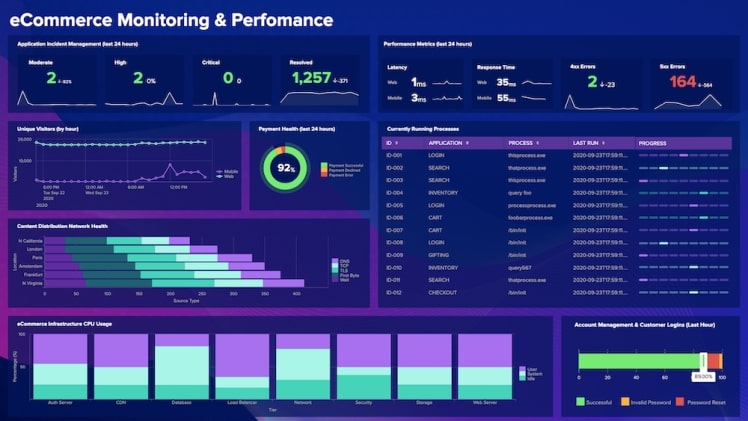As the time goes, a Splunk environment may become unsteady because of the complexity of the environment and issues with configuration. Common problems are scattered deployments, incorrect configurations. Incompletely correct data onboarding, preliminary query design, inadequately sized system, a log file with different formats, skews user rights and some more variables.
Splunk environments must be inspected periodically to make certain that information is being stored and onboarded properly and adequate functional and security supremacy. It is provided that Splunk Enterprise’s implementation is functioning at its pinnacle staging. The following areas need to be reviewed regularly:
- Analysis of growth strategies and architectures for Splunk
- Base configurations
- Forecasts for growth in the future
- The performance indicators and the bottlenecks
- System generated Internal messages
- Installed Applications on the system
- Health for heavy and universal forwarders
- Data governance and security issues
To ensure that your Splunk functions efficiently, Splunk offers a smooth and robotic Splunk health evaluation completed within two weeks. For more, join a Splunk course online today.
1: The CHECKUP:
Review logs for diagnostics using Splunk health assessor computer-assisted audit tool (CAAT) and a short focus review conducted by a certified Splunk expert. Level 1 reviews must be completed every quarter to verify there is a good chance that the Splunk environment has been ingesting data and storing it efficiently and running at the maximum capacity.
2: The EKG:
The performance metrics can be taken from the Splunk Enterprise Environment to gather data on CPU memory, disk queuing process, network usage, license usage, forwarder use, indexer retention, and bucket use. The information collected is scrutinized by an expert panel called the Splunk Health Assessor CAAT.
3: The BIOPSY:
Data samples are gathered and reviewed to identify a problem discovered in the information saved in Splunk or through the system’s functioning. The data is analyzed against the configuration and examined to determine the risks associated with this particular condition and then suggest the best course to take.
4: EXPLORATORY SURGICAL CARE:
Use the running system, analyze high-risk conditions and implement corrective measures or suggest a course of action.
Splunk Health Assessor App
The Splunk Health Assessor App is an automated audit tool (CAAT) created to aid in the evaluation of an enterprise Splunk environment. The primary goal of the app is to generate valuable reports that show the current state of the Splunk Environment as well as tools to conduct deep-dive investigations into forensics, an automated framework for tests for conditions that are known as well as a historical base to determine the change rate within a Splunk environment. Check out this Splunk tutorial for beginners to start learning splunk.
A comprehensive assessment is completed using solely the diagnostic data dumps available from the Splunk servers that are part of the system. Plugins can be used to look over examples of customer information and performance measurements over time and diagnostic data from the most critical forwarders that are universal.

